
Stop Motion-Animation
[The explanations on this website are those related to Visual Arts]
What is Stop Motion?
This is the process by which many images, objects or drawings are placed in a certain order to show the illusion of movement. To be more clear, the designs are sightly moved and photographed after every movement. A short animation could take a very long time to complete.
In order to get a smooth transition for your animation, it could take twenty four (24) pictures per second. That means, a two minute animation could take two thousand eight hundred and eighty (2,880) pictures. If you were to draw each scene for a short animation video, it could take up to one thousand four hundred and forty (1,440) pictures.
Attempts to making animations could be dated back to the time of the stone age, otherwise called the time of the cave men. On the walls of the caves, there were attempts to portray the animals running.
Puppetry, which is an ancient way of telling stories, also influenced the whole idea of stop motion animation. Puppetry can be dated as early as (Before the Common Era) or as you would say Before Christ. Clay puppets were also discovered in tombs of Egypt. Puppetry is considered to be folk art and a tradition practiced in many Native culture; for example: China, Africa, India, Japan, Vietnam and Germany.


Ways in which we can go about making a Stop Motion Animation?
1. Hand Drawn- Animation
-
Invention of Papyrus/ Paper
2. Hand Painting- Animation
4. Claymation- Animation
5. Object Motion- Animation
6. Puppet- Animation
7. Silhouette- Animation
8. Flip Book- Animation
9. Thaumatrope-
-
Camera Obscura/ Invention of Photography
10. Kinora
11. Mutoscope
12. Zoetrope
13. Choreutoscope
14. Zoopraxiscope
15. Phenakistoscope
17. Bioscope
18. Kinetograph
19. Praxinoscope
20. Chronophotograph
21. Phonoscope
-
Cymatics' is the science of visualizing audio frequencies.
22. Eidoloscope
23. Phasmatrope
24. Kaleidoscope
25. Paper Animation
26. Pixilation
27. 2D Computer Animation
28. 3D Computer - Animation
(CGI: Computer Generated Imagery
29. Virtual Animation
30. Motion Graphics- Animation
31. Visual Effects (VFX)- Animation /Special Effects
Photography & Animation
The earliest record of a surviving photograph was taken in 1826. The whole idea of a photograph or a camera connects to the Camera Obscura, this means (Dark Chambers). The records of history states that the Camera Obscura dates back to as early as 1685, this is more than three hundred and thirty five years ago.
The use of Photography also made great contributions to the cinema and animation industries, such as:
-
-
Founded: October 16, 1923, Los Angeles, California, United States
-
-
20th Century Studios




The images above are examples of what the cameras looked like when they first became popularly used by the public. Here is an interesting fact, during the time of the Victorian era, it became popular for persons to take photographs of their deceased love one or they would pose with them in the photograph as if they were alive. This might sound morbid, but it helped persons to cope during their grieving process; even for some family and friends who might forget what the person looked like after some years went by.

Stop Motion- Animation
1. Hand Drawn- Animation
Hand drawn animation is a traditional method, which is when each frame, movement and scene is drawn by hand. The animation would be done using a dry medium for example, a pencil or chalk.The hand drawn technique as well as many other animation techniques can be very time consuming. The time it takes to complete an animation depends on how many characters are in the scene, the length, how many movements will there be, how fast does the individual work and skilled or experienced they are at animating.
"Fantasmagorie" is one of the oldest hand drawn animations that was ever recorded in history. Fantasmagorie, which is considered to be one of the first cartoons ever made was done in 1908, by the French visual artist Emile Cohl.
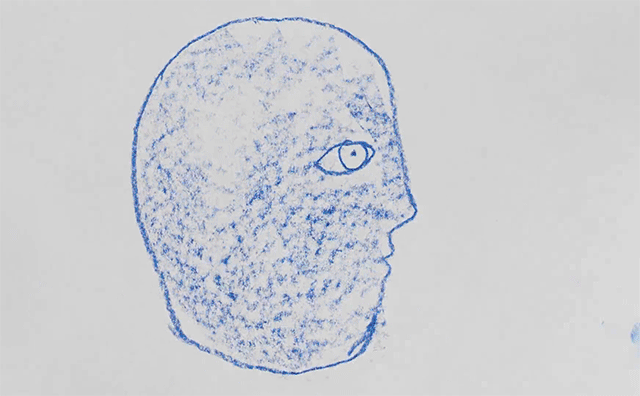
The most interesting thing about hand drawn animation, is that you dont require much to get started. Simply using a pencil and a paper you can easily make an income, for example creating an animation for a music video. The animation above is a music video titled“Emulate”, which was made in 2018 by the Brooklyn-based artist Daniel Zvereff, for the Norwegian musician Kaya Wilkins otherwise known as Okay-Kaya‘s.
Hand Painting- Animation
Painting is considered a traditional medium like drawing. Hand painting usually takes a longer time than hand drawing, even though this is the case, the same principle applies in stop animation. After each part has been painted, a photograph would be taken of each part.
"Loving Vincent" is the first film made by painting every single scene and frame by hand from the beginning to the end. The process of this movie started before 2015 and was released in 2017. This stop motion approach was done by more than a hundred twenty visual artists, who came together for this film from all over the world. The British director Hugh Stewart Jasper Welchman and the Polish filmmaker hired actors; such as Douglas John Booth to perform the scenes of the movie which was then painted. This one and a half hour movie resulted in more than sixty thousand paintings.
2. Claymation- Animation
This is when you use clay or play dough otherwise called Plasticine, to create sculptures such as the: characters, environment, plants and inanimate objects.Plasticine is a type of manufactured or man-made modelling clay that contains: calcium salts, petroleum jelly and aliphatic acids.
The materials that can be used to are:
Earthenware Clay
Stoneware Clay
Flour (dough)
Polymer Clay
Claymation can take many different forms because of the options we have to choose from.
The use of play dough makes very neat and interesting sculptures and characters which are great for stop motion. Following your story line you will take a picture each time you move or slightly change something in the scene. Clay makes this process easier if the material being used is moist, because it would be easy to adjust and move for each photograph. If your material become dry, you wont be able to adjust it because it would be stiff or might break.
The oldest record of a Clay animation is "The Sculptor’s Welsh Rarebit Dream", it is said that this art piece was made between the period of 1904 to 1913 by Ulrich Merkl.

"A Grand Day Out"is the first stop motion cartoon released by the British animator Nick Park in 1989. This is a part of many other series titled Wallace and Gromit. Wallace and Gromit is the most famous Claymation animation ever made.
3. Object Motion- Animation
Object stop motion is basically when you use objects available in your surrounding to create a story.
For example found objects or an inanimate object, such as :
a rock, toy, action figures, dolls, books, dried leaves, chair, cup, clock, box, ball and so on.
Each time the object is moved, one would take a picture of it, and at the end of the scene all of the images are combined together. When all of the images are combined in the correct order, an animation or stop motion video is made.
Some stop motion films did not last a very long time, because of the ways in which they were stored or saved. The material, machine or tools used to store the stop motion film would deteriorate due to lifespan of the device it was on or due to harsh weather effects. As a result many of the oldest stop motion films got lost or forgotten throughout the years.
Le petit soldat qui devient dieu (The Little Soldier Who Becomes God) by Émile Cohl is another old stop motion film done using objects to animate.
4. Puppet- Animation
Puppets were being used long before they became acknowledged or stored it as a part of our records of histroy. Many evidence shows that puppets were being used as early as 2000 BC. Puppetry was widely used in Ancient Egypt, Greece, India, China, Indonesia and Africa.Throughout time, puppets took many different forms, they were often made with: clay, wood, fabric, grass straws, ivory and natural food.


What is ivory you asked? Well, Ivory is a hard, white material that comes from the tusks, teeth or bone of animals. Though it might seem different, it is basically another form of bone called dentine.
The constant usage of this material for jewellry and sculpting over a period of time got corrupted, with persons not being patient enough to wait until the animal died. Instead they went about decapitating and killing animals that had tusks until most of them became extinct.



As time progressed we moved on to what we now call Shadow animation and puppetry. Another word for this is Marionette. A Marionette is a puppet controlled from above using wires or strings. A marionette's puppeteer is called a marionettist. Puppetry currently take many different forms and are evolving as the years go by.
Puppet animation or stop motion films are made by photographing each scene and movement then rrange them in order. For most stop motion and animated films, the images are already arranged in order based on the technology that was used.






%2C%20Teatro%20dei%20Piccoli%20of%20.jpg)





Since Puppetry, Shadow Puppetry, Paper animation and Silhouette animation are interrelated depending on how they are used, Visual artist rarely accept these as stop motion or animation approaches. Photographic clips should be put together in order to achieve the concept of stop motion. If this is not done, and the puppets are used as
they are, or the scenes are video-graphed, it would be
considered as a regular video or just another typical form
of puppetry and not stop motion.
This would be a part of the Theatre Arts and not Visual arts.
Hey! When you think about it, since we are in the Caribbean, we can even use young Breadfruits to make our puppets. Box juice boxes that are used to make toy trucks or tractor trailers can also be used to make our stop motion clips.




5. Silhouette- Animation
Silhouette animation can be done with the use of paper, or your shadow. With the paper cut outs you can draw the outline of the character or you can piece the character together, making parts that can be moved like the joints.
For silhouette animation you can use light to reflect your shadow on a flat surface; or you can have your characters and your setting cut out from a flat piece of material like a piece of paper or dried animal skin that has been shaved of its hair, like a goat for example.
A thin piece of fabric is stapled or nailed to a firm piece of board, like a silk screen or a thin cotton sheet.
Afterwards you would place your character behind it and take a series of photographs for your stop motion animation. For the paper silhouettes that you would use without light source, you would simply take a photograph after you have slightly moved the paper for every frame.
Ribble (2015) stated the following:
Silhouette animation comes from the medieval era in China, where silhouette puppet shows called "Shadow plays" were popular. Shadow puppetry was the closest thing to silhouette animation, then it became more popular around the world in the early 1900's. One of the earliest record of silhouette animation that was made but unfortunately got destroyed was the "Sporting Mice" by Charles Armstrong. Multiple images of mice were cut out and a photo was taken of each. ( Prezi, 2015, p.2-4)

.png)

.png)
6. Flip Book- Animation
The invention of paper was first acknowledged in China around the time of 100 BC. Around the time of 105 AD, China became the first place in the wold to manufacture paper on a very large scale by making a business out of the whole concept.
Before we had these nice white sheets, that we call paper we first had what are called Papyrus, that is made from plants and Parchment that is made from the skin of animals. The Egyptians were the first to develop this.
The Papyrus dates back to the time of c. 6000-c.3150 B.C.E., during this period it grew naturally in the flooded river Nile.
In today's society we would just say that the river Nile is located in Africa.
As it relates to Parchment, this was popularly used around the period of 200 B.C.
What we now call paper is made from plant sources that the Egyptians called Papyrus, Djet, Tjufi and Wadj.








In the Caribbean we often use banana trees to make paper. We have different types of paper because of what we use to make them and how we go about making them. We have bleached and unbleached paper, hence the white look many papers that we use. Coloured pigments can also be added to our papers, resulting in variety of different coloured paper.
You might be thinking...
Why did we go into discussing all of that without even mentioning the whole concept of Flip book Stop Motion?
This is because we are not truly sure if there were individuals who tested or attempted this approach before we even knew the term stop motion, because there were no official records of this.
For most individuals who attempted some form of stop motion, they were considered to be practicing witch craft or sorcery; we all know what happens for most persons in that situation, they are burned, hanged or just killed if caught.


Before we acknowledged flip books, during the time of 1868 John Barnes Linnett came up with the term kineograph, which was after the Phenakistoscope, Zoetrope and Praxinoscope were made.
Afterwards came the Kinora, a Stop motion picture device. It was developed by the French inventors Auguste and Louis Lumière in 1895.
There are many different ways in which we can create a Flip Book. The overall idea is to draw each scene and movement by hand on a separate piece of paper, then combine all of the papers together in the correct order. When all of that is done, you will flip each page at an equal consistency to get a Stop Motion Animation.
(It is optional for you to flip from the front to the back or from the back to the front, as long as the images play out in their correct order for the story).

.jpg)




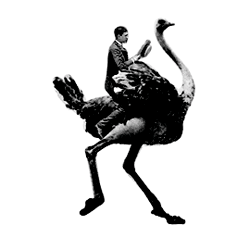



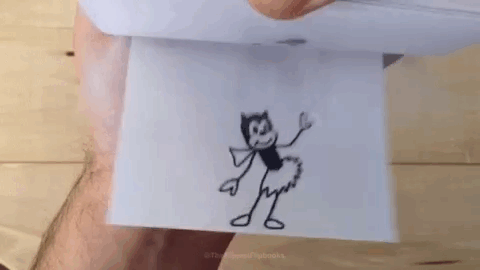
Thaumatrope-
The Thaumatrope is made up of two pieces of paper with two different drawings on both sides. The Thaumatrope became popularly used during the he nineteenth century.
This century began in the year of January 1, 1801, and ended on December 31, 1900.
A Thaumatrope is usually in a circular shape and in the middle of the two papers, a string would be glued on the inside. Another way you could make it is to glue the two pieces of paper together, pierce two holes on both sides equally then tie a string or cord in each hole.
By turning the small piece of paper with the cords at a fast rate, it will present the illusion of both pieces moving in one image.
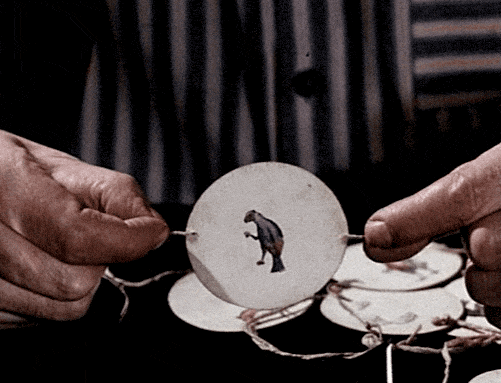

.jpg)



_jpg%203.jpg)

Kinora
The idea of having different designs and movements transitioning into each other gave birth to many other ideas. What we now call stop motion or animation were called many other names before our time.
The Kinora is an invention that was done for the purpose of flipping a roll of images, while you are able to view them through a glass.
The handle of the machine is turned allowing the reel of photographs to move in a sequence.
The Kinora was developed during the 1800's,around the same time of the earliest Television, which was called many other name before the term television or T.V. was acknowledged.
The idea of Stop Motion influenced many technological devices we now use today, such as computers, cell phones, digital games, televisions and smart watches.



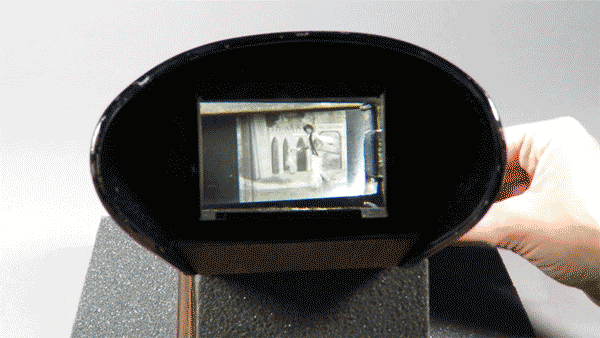
Mutoscope
The Mutoscope was a more updated version of the Kinora device. Like many other devices W.K.L. Dickson and Herman Casler worked on developing their version of a Mutoscope that was acknowledged in1894.
The Mutoscope did not project on a screen and provided viewing to only one person at a time.
A lot of images were placed on a roll and was flipped like sheets of paper, as the viewer turned the handle.



Zoetrope
The stop motion tool often called the Zoetrope was popularized in 1833 by William George Horner, otherwise known as an English Mathematician. A cylindrical form is made the ability to rotate on a stand. The cylinder also has an open area at the top and slits cut out at the side. Many drawings or printed imaged would be placed on this long strip of paper in a certain order, so it would show a smooth transition of movements when it is placed inside the cylindrical form.
As the cylindrical form turns, the viewer would look through the slits or the peepholes on the form. Due to the fast movement the Zoetrope would present the illusion of movement as the images pass by the viewer’s eye.


Choreutoscope
The Choreutoscope was often made using metal and wood. The metal would be the shell, this mean the outer part or the exterior section of the Choreutoscope. The wooden section would consist of the handle that is turned and the part that holds and move the images. A flat piece of metal would cover the rest of the images as you look at the next image that moves by the window of the Choreutoscope.
The Choreutoscope is popular for the stop motion animation titled “The Dancing Skeleton”. This design was also influenced by the artworks of: Hans Holbein "Dance of Death", which is a series of woodblock prints (1424) and Christiaan Huygens whose drawing is titled the “Dancing Skeleton” (1659).
The concept of the stop motion drawings used with the Choreutoscope was conceived 200 years before the invention of the of the tool was acknowledged and claimed by the English physician Lionel Smith Beale and the English optician William Charles Hughes.







Zoopraxiscope
The Zoopraxiscope is a little similar to the Zoetrope. The only difference is, instead of drawing on a flat paper or using printed paper on the inside of the cylindrical form; the characters most preferably animals are made in 3D forms and are placed on small poles or sticks going around in a circle. After executing some problem-solving skills, the official term Phenakistoscope was acknowledged.
In 1879 the British photographer Eadweard Muybridge became popular for his unique construction of the Zoopraxiscope. Like the Phenakistoscope, Eadweard Muybridge drew on a circular disc of transparent glass, hence the creation of the Zoopraxiscope. The purpose of drawing on the glass disc allows you to project the drawn images on the wall or on a flat surface for the audience to view.





Phenakistoscope
The Phenakistoscope was considered as a very popular toy used by children during the Victorian era.
The images were drawn, printed, or painted on a thick paper or cardboard material that was attached to a stick or handle, this allows it to rotate. Some of these circular discs would have small radial slots or vertical slits going around the shape.
Some users of the Phenakistoscope would turn the disk at a fast speed while holding it in front of their face. They would then stand in front of a mirror and look at the reflection of the images through the slits.
The Phenakistoscope was called many other names because other individuals across the world were thinking about the same idea of creating illusion with the use of a disc around the same time.
When these designs became widely accepted by the public, they were often called the following terms: Stroboscopic Disc, Phantasma scope, Fantoscope
The Belgian physicist Joseph Plateau worked on making his own disc illusions in Belgium; meanwhile the Austrian physicist Simon Ritter Von Stampfer was working on his own disc illusions in Austria during the period of 1832 to 1833.
Another well-known individual associated with the Phenakistoscope was, Simon-François-Alphonse Giroux, because of his association with selling products like the Phenakistoscope in the device market.
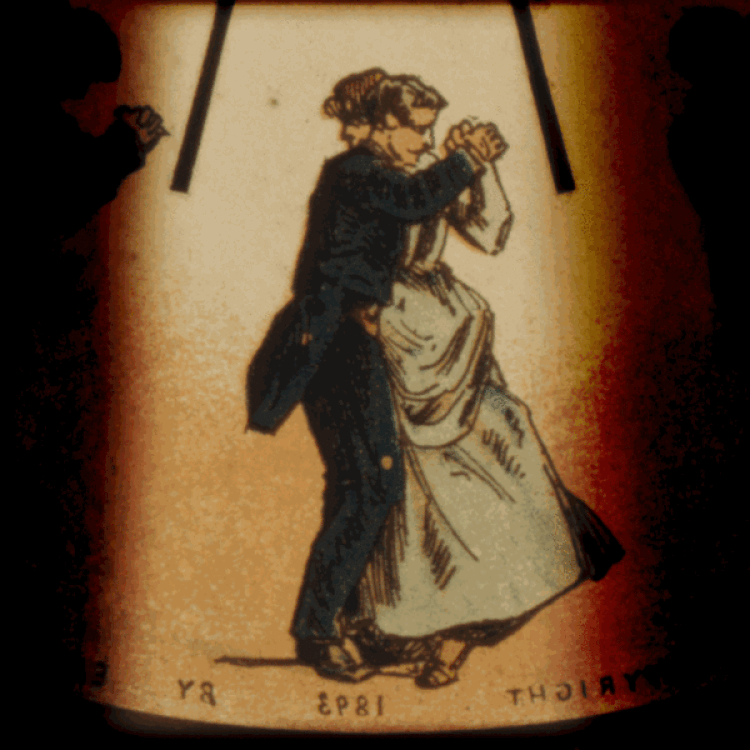









As always the trend and popularity of something might fade in and out, so as time progress technology evolves or a new technological device is made.



Bioscope
The different types of Bioscopes were seen in Africa and India. Storytellers would walk around to different locations attracting persons, especially children with their highly decorated and unique box. Individuals would look through a small hole at the front of the box as they stooped or sat on the ground. The storyteller would then turn the handle that is attached on the outside of the box. On the inside of the box, there are strips of paper with images going across. Each time the storyteller turns the handle, the viewer would then see a different image, along with a light source that shines on the inside.
While some Bioscopes have no audio, some storytellers would be very creative by using musical instruments with their Bioscope.
As time progressed persons would play their; drums, horns, record player, Harmonium, swarmandal, harp, radio, and other wind or string instruments.
Playing instruments and narrating a story would add more interest to the Bioscope for the audience.














Around the time of 1895, a unique Bioscop was made public. This Bioscope was called a movie projector.
Two German inventors and filmmakers named Max Skladanowsky along with his brother Emil Skladanowsky worked together in making one of the devices that influenced film making industries greatly.
There were many persons who worked on their own design in order to create their own Bioscope projectors. Two other individuals who were recognized for their association with the Bioscope projector were, Walter Isaac and Charles Urban.
Kinetograph
A Scottish/ French entrepreneur, William Kennedy Laurie Dickson popularized the Kinetograph around the time of eighteen eighty eight (1888), along with Louis Le Prince, Thomas Edison Auguste Lumière and Louis Lumière.
This influenced the terms we now call Stop Motion camera pictures, Motion Pictures, Cinematography, Film Making and Videography.
The viewer would look through the lens at the top of the machine to watch a film from a long reel, strip or ribbon of images. While you are looking through the peephole, the light on the inside of the box shines though the strips of paper or perforated tapes as you turn the cylindrical form or spinning wheel.
In different coutries and cultures, individuals experimented with stop motion and also came up with a vaiety of names most of which were not established or acknowledged officially. On August 24, 1891 the following names were filed: Scopeopsm Kinetograph (the camera) and the Kinetoscope (the viewer).
.jpg)





%20and%20t.jpg)


Praxinoscope
It is said a science teacher Charles-Émile Reynaud invented his own Praxinoscope in 1876.
It is also believed that the term Praxinoscope derived from the Greek words πρᾶξις (praxis), meaning “action”, and the word σκοπεῖν (scopein), which means to “look at”. The Praxinoscope is an improvement to the Zoetrope. This has an outer cylinder with a small inner cylinder attached on the inside. The outer cylinder would typically have twelve different images on a stripe of paper. This strip of paper is then placed on the inside of the outer cylinder.
And on the smaller cylinder that is on the inside of the larger one, vertical strips of mirrors are glued around it. Since there are usually twelve images on the strip of paper, there would be twelve mirrors aligned vertically on the small cylinder. One mirror would be placed on the small cylinder, for every image that is placed on the strip of paper.
The mirrors on the inside would reflect the images for the viewer to see better. The mirrors slows down the amount of blur or fast movement that would be seen in a Zoetrope.



Chronophotograph
Eadweard Muybridge, Étienne-Jules Marey, Georges Demenÿ, and Ottomar Anschütz, built their reputations by making chronophotographs. And Victor von Reitzner, George William de Bedts, Ernst Kohlrausch, Robert Dempsey Gray, and William Gilman Thompson, and many others made their contribution by turning photographs turn into moving pictures.
Since devices were not readily available for everyone who wanted to take photographs, some persons had to create their own photographic devices.
What does this have to do with a Chronophotograph?
Well, Etienne Jules Marey popularized this term because they were interested in the natural movements of animals and humans, this is called locomotion.
What is locomotion?
These are the natural movements of animals from one place to another, such as: running, swimming, jumping, flying, hopping, soaring, and gliding. The word loco means place or location and mōtiō means to move. What they would do, were to take photographs of movements of creatures, such as: birds, horses, humans, pigs and so on.
In the beginning, trying to capture multiple photographs under a certain amount of light would often be blurry; multiple movements would transition into one still image; and the animal or person would have to be in a certain position for a longer while than expected.
So, a variety of techniques or steps were taken in order to achieve a clearer series of movements.
An example of this could be a person walking. During that time, the photographer would dress the person walking in a black suit and use a long white string to attach to each joint of the person. When this was one, the image that would appear blurry, would then show the movements of the person more clearly.
Following the popularity of the Chronophotograph, the Chronographic picture rifle; Chronophotographic projector; and the “Phonoscope” came into being.













The Phonoscope is an instrument that was made for observation of movement and sound. What this device does is to convert sound into physical form. In doing so, you are able to see sound and not only hear it. And like many other devices, eventually this one evolved.
As a result, persons are now able to imitate visible vibrations of sound waves on heart monitors and in music videos.

'Cymatics' is the science of visualizing audio frequencies.
(CYMATICS: Science versus Music)
NIGEL STANDFORD (Artist)
2014 - Single & Music Video
Cymatics is the first single from the Album "Solar Echoes".
https://nigelstanford.com/Solar_Echoes/default.aspx?s=youtube&p=c
SHAHIR DAUD (Director)- http://shahirdaud.com/
CREDITS
Mixed by Michael H. Brauer
Electric Lady Studios, NYC
Engineered by Simon Gooding
Color Studios, Wellington, NZ
Cover art by Greg Martin


